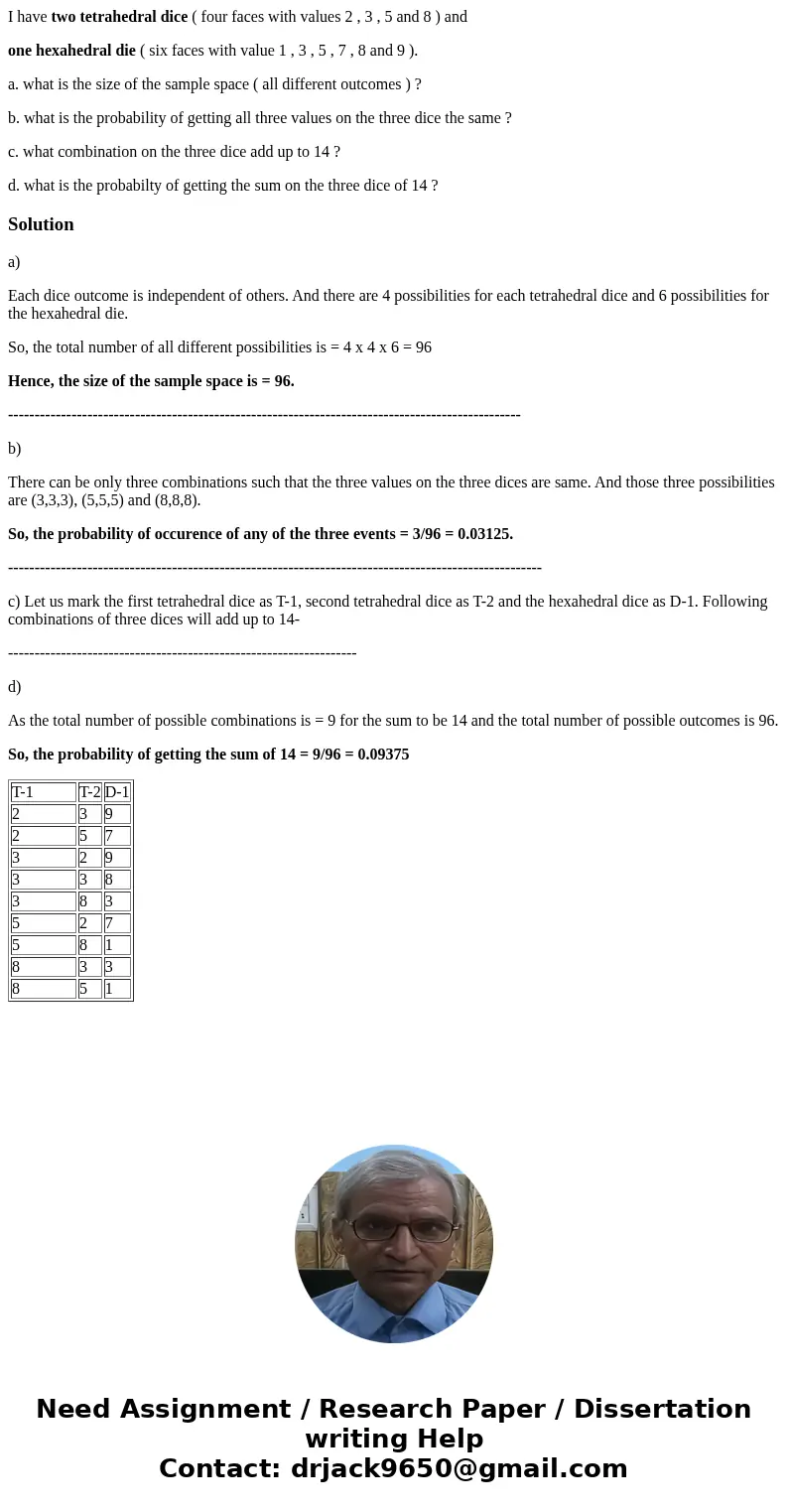I have two tetrahedral dice four faces with values 2 3 5
I have two tetrahedral dice ( four faces with values 2 , 3 , 5 and 8 ) and
one hexahedral die ( six faces with value 1 , 3 , 5 , 7 , 8 and 9 ).
a. what is the size of the sample space ( all different outcomes ) ?
b. what is the probability of getting all three values on the three dice the same ?
c. what combination on the three dice add up to 14 ?
d. what is the probabilty of getting the sum on the three dice of 14 ?
Solution
a)
Each dice outcome is independent of others. And there are 4 possibilities for each tetrahedral dice and 6 possibilities for the hexahedral die.
So, the total number of all different possibilities is = 4 x 4 x 6 = 96
Hence, the size of the sample space is = 96.
-------------------------------------------------------------------------------------------------
b)
There can be only three combinations such that the three values on the three dices are same. And those three possibilities are (3,3,3), (5,5,5) and (8,8,8).
So, the probability of occurence of any of the three events = 3/96 = 0.03125.
-----------------------------------------------------------------------------------------------------
c) Let us mark the first tetrahedral dice as T-1, second tetrahedral dice as T-2 and the hexahedral dice as D-1. Following combinations of three dices will add up to 14-
------------------------------------------------------------------
d)
As the total number of possible combinations is = 9 for the sum to be 14 and the total number of possible outcomes is 96.
So, the probability of getting the sum of 14 = 9/96 = 0.09375
| T-1 | T-2 | D-1 |
| 2 | 3 | 9 |
| 2 | 5 | 7 |
| 3 | 2 | 9 |
| 3 | 3 | 8 |
| 3 | 8 | 3 |
| 5 | 2 | 7 |
| 5 | 8 | 1 |
| 8 | 3 | 3 |
| 8 | 5 | 1 |

 Homework Sourse
Homework Sourse